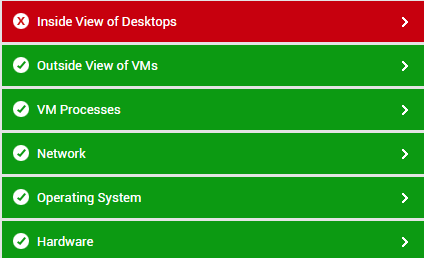Monitoring vSphere/ESX Servers with VMs Hosting Desktop Applications
In some environments, the virtual guests hosted on vSphere/EXS servers may be used to support desktop applications. Administrators of such virtual environments would want to know the following:
- How many desktops are powered on simultaneously on the ESX Server?
- Which users are logged on and when did each user login?
- How much CPU, memory, disk and network resources is each desktop taking?
- What is the typical duration of a user session?
- Who has the peak usage times?
- What applications are running on each desktop?
- Which ESX Server is a virtual guest running on?
- When was a guest moved from an ESX Server? Which ESX Server was the guest moved to?
- Why was the guest migrated? What activities on the ESX host caused the migration?
Using the VMware vSphere VDI model (see Figure 1), administrators can find quick and accurate answers to all the queries above, and also receive a complete ‘desktop view’, which allows them to get up, close with the performance of every guest OS hosted by the ESX server and detect anomalies (if any) in its functioning.

Figure 1 : The layer model of a VMware vSphere VDI server
Each of the layers depicted by Figure 1 and the tests associated with the layers are discussed in detail in the sections that follow. Since the last 4 layers of the VDI model have already been dealt with when talking about the VMware vSphere ESX monitoring model, here we will discuss the Outside View of VMs and the Inside View of Desktops layers only.
